Followers of Ping have been keenly anticipating the successor to the G30 range with many betting the new clubs would be called G35.
Ping has sprung a surprise however by going back to a simple G in what is the the only backward step for a range packed with performance technology.
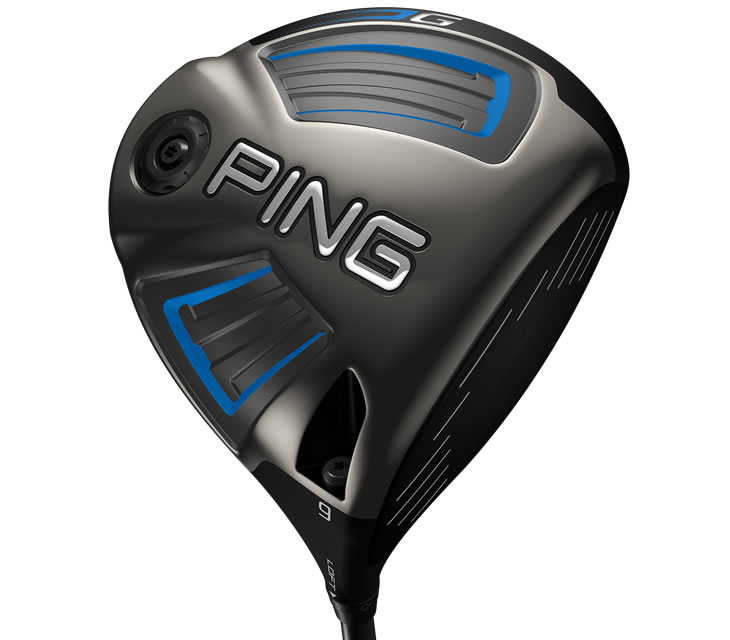
We've been lucky enough to have our hands on all the new Ping equipment and put it through its paces on the range so here is look at the key technology behind each of the clubs with links to read our detailed reviews complete with in hand pictures, video and product details.
Ping G Drivers
Inspiration comes in many forms and in the case of the Ping G driver it started with one of Ping Chairman & CEO's holiday snaps. His image of a Dragonfly got the engineers thinking about structures that would allow them to save weight with a thinner crown of the driver without impacting on strength.
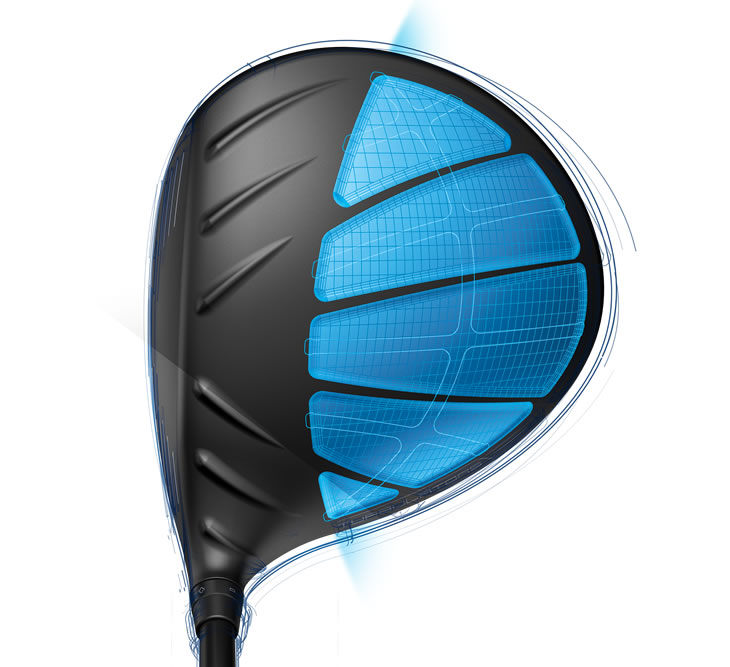
The weight saving of 8g contributes to increased distance, forgiveness and consistency as the saved weight has been relocated to better position the centre and gravity (CG) for an increased MOI.
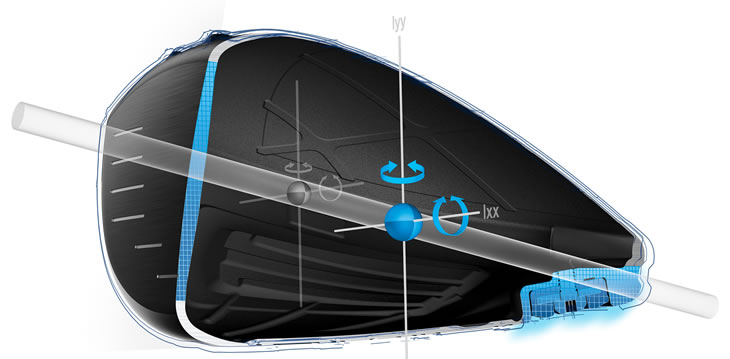
The G drivers have a CG that is positioned 1.2 mm lower and 1.6 mm deeper than in the G30 drivers which translates to a 1% higher heel to toe and 6% higher top to bottom MOI.
As in the G30 range the G drivers are available in standard, LS TEC (Low Spin), and SF TEC (Straight Flight) and they feature the same Turbulator technlology that improves aerodynamics for a faster clubhead speed.
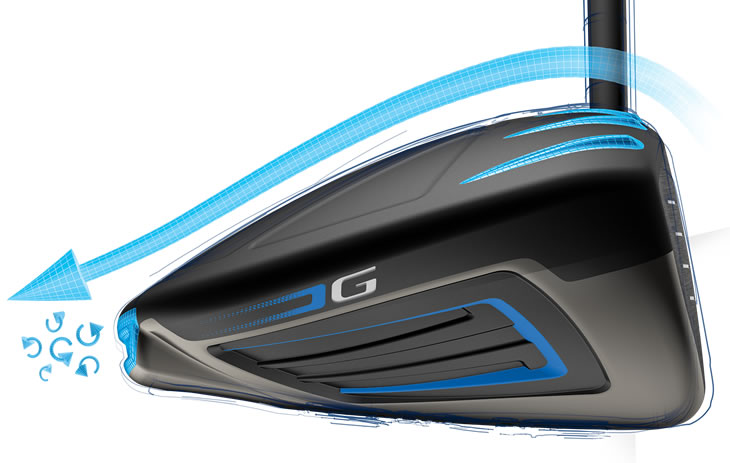
Aerodynamics in the G drivers have been further enhanced by the addition of what Ping calls a Vortec at the back of the clubhead. This stabilises the vortices that develop behind the driver head to minimise wake turbulence which in tandem with the turbulators and crown shape reduces drag by 37% at impact and by an average of 11% across the whole downswing movement.
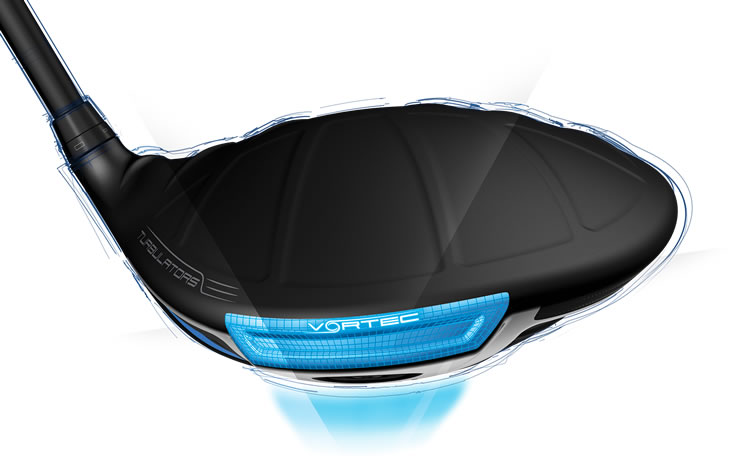
Read the Golfalot review of the Ping G Drivers
Ping G Fairways
Appropriate for a New Year launch getting thinner and losing weight is also a key feature of the Ping G fairways. A crown 25% thinner than the G30 has saved 7 grams with the discretionary weight used to move the CG 4.8mm lower and further back.
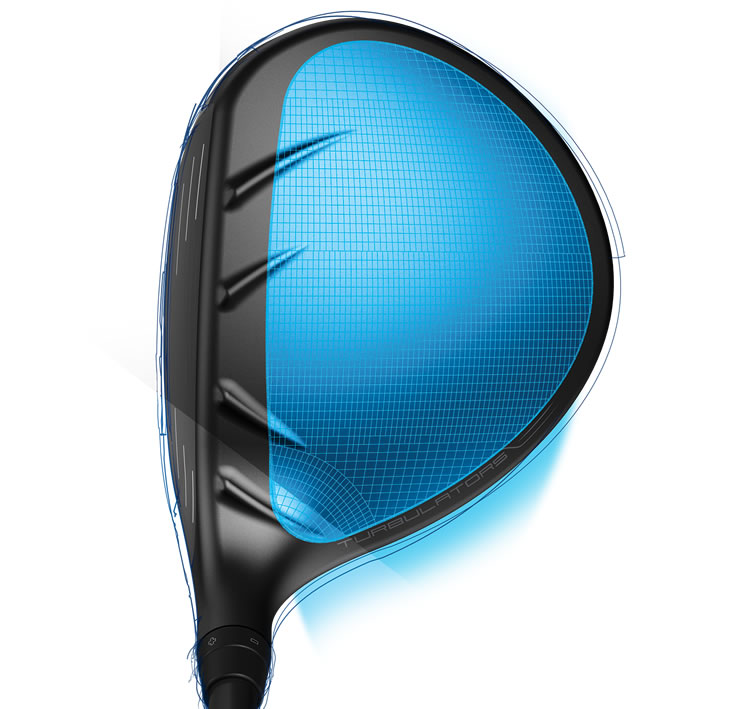
As a result the MOI has been increased 3% heel to toe and 7% top to bottom making it easier to get the ball airborne with a higher launch.
It also makes the G fairways better on low impacts that dovetails with the reshaping of the clubhead to provide a lower leading edge. The bottom of the face in the G fairway has been moved down by 3.6 mm with the leading edge sitting closer to the ground. This lowers the CB by 2 mm and raises the impact position 12% up the face to make it easier to get the ball into the air.
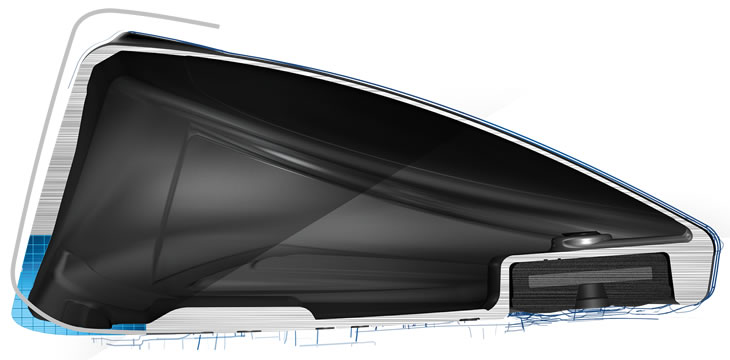
The face itself is constructed from Carpenter 455 VFT-Steel that has a 25% stronger yield strength than traditionally used 17-4 stainless steel and was used in the face insert of the G30 fairways.
The properties of the Carpenter 455 steel allow for a thinner, variable-thickness face design, which increases the flexing of the face at impact.
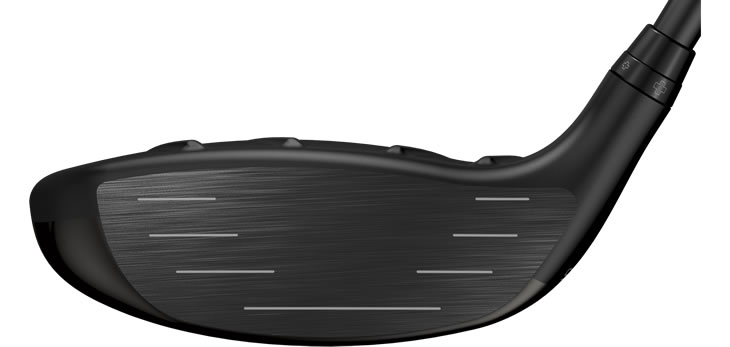
This bending process has been enhanced with the use of a cascading sole design that increases the ability of the face to bend. It does this by engaging more of the head structure in the bending process, thereby storing more potential energy, to create a hinge that results in a larger total springing effect.
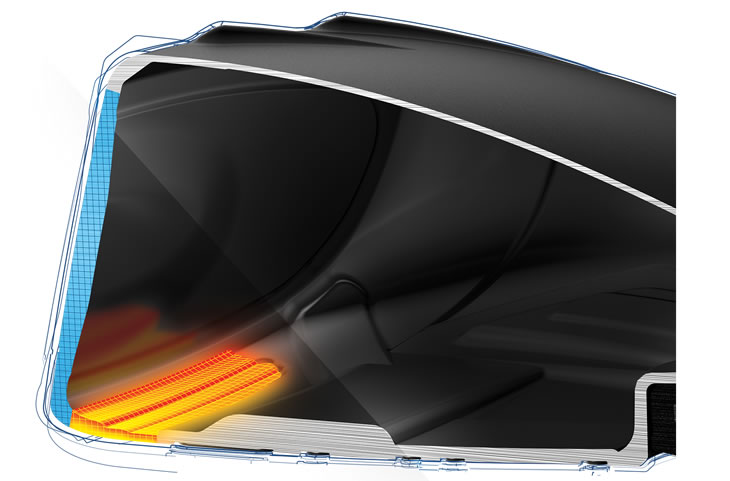
A change for the G range of fairways is the introduction of two extra models to complement the standard version for the first time. The standard G fairway has a 169cc head and comes in lofts of 15.5, 17.5 and 20.5 degrees.
For those players looking for a more forgiving option the SF TEC has a larger 175cc head that is deeper with a CG towards the heel that gives a draw bias to straighten out shot with higher lofts of 16 and 19 degrees.
Finally, Ping has introduced the G Stretch 3 fairway that has a 13 degree, 184cc head, with a CG that is 16.5mm forward than in the standard G fairway to give a lower spinning, better players fairway option.
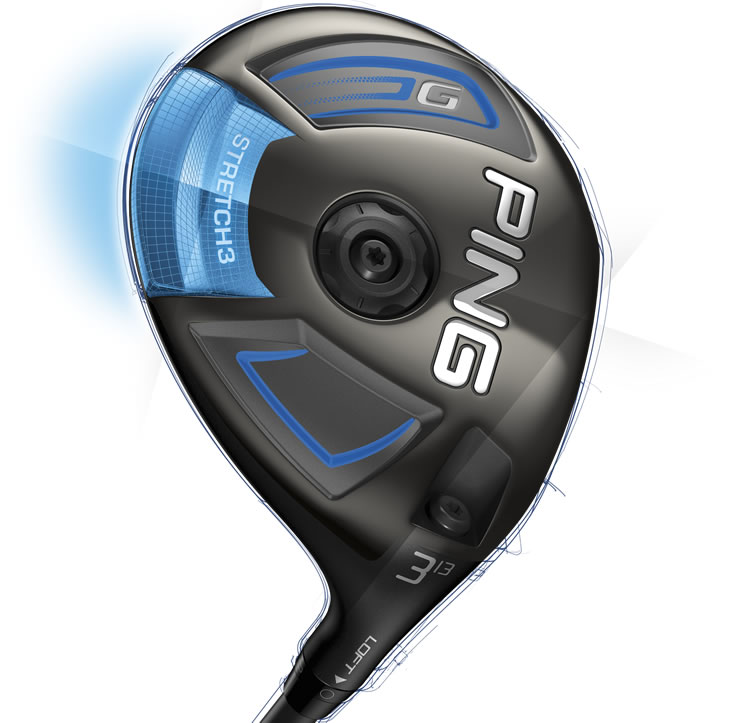
Read the Golfalot review of the Ping G Fairways
Ping G Hybrids
The Ping G hybrids use the same Carpenter 455 VFT steel in the face as the G fairways and because it has a 25% higher yield strength than the 17-4 stainless steel used in the G30 hybrid it has allowed the engineers to machine the face thinner to save 8 grams of weight and allow for greater flexing.
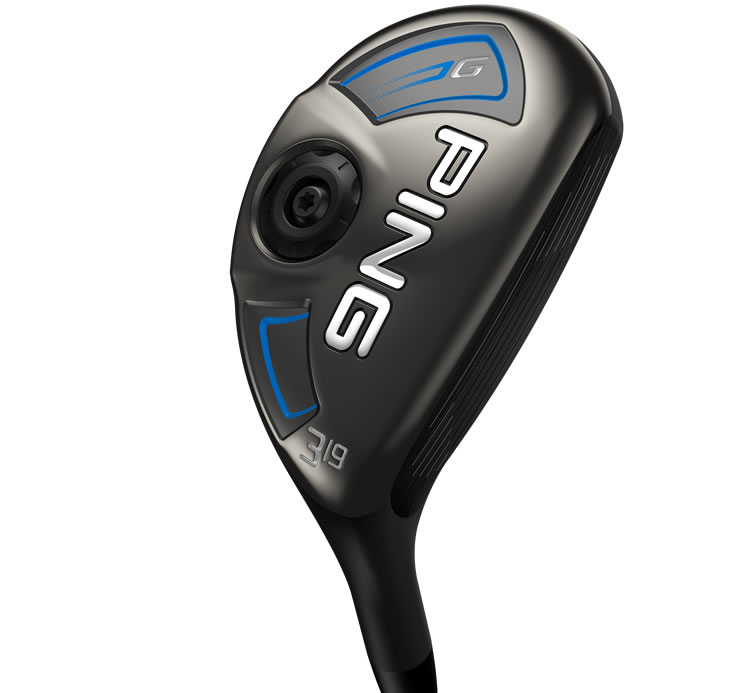
This, combined with a similar cascading sole design to the fairway, means increased ball speed with impressive gains over the G30 hybrid of 0.75mph on centre strikes and up to 1mph on mis-hits.
The most noticeable change from the G30 is that the G hybrid has been given Turbulators.
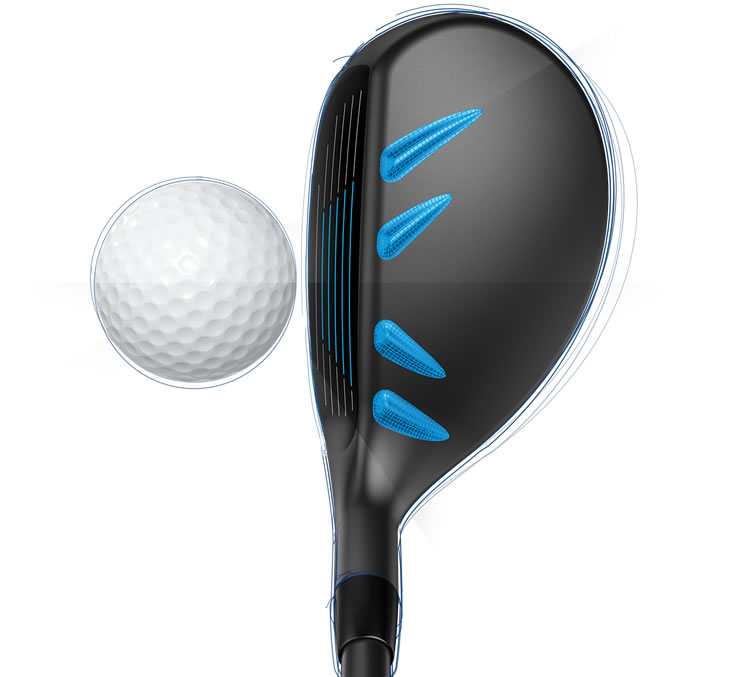
Although these don't have any aerodynamic effect, they help to improve alignment and confidence and work with the unpainted grooves in the middle of the face to provide ball capture at address.
Read the Golfalot review of the Ping G Hybrids
Ping G Crossovers
Perhaps the most newsworthy club in the G range is the newly introduced Ping G Crossover club that promises the distance of a hybrid with the control and accuracy of an iron.
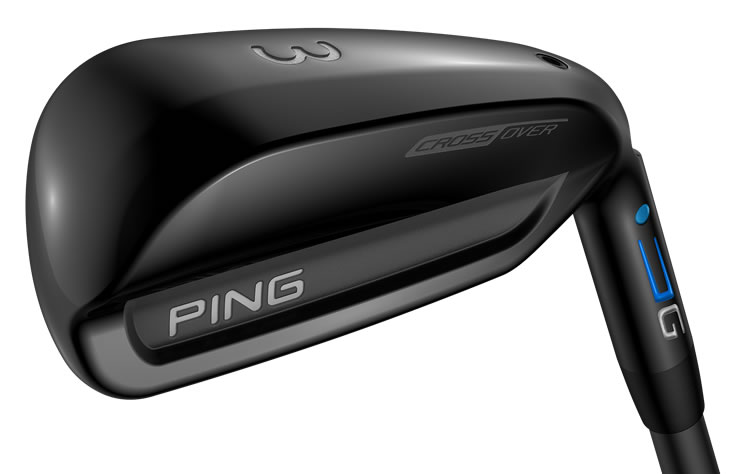
Ping has recognised that some players have a problem with hybrids going left, spinning too much or not hitting consistent distances, but are not getting enough height or distance from the long irons.
Enter the Crossover that aims to give golfers the best of both worlds. The face is constructed from the same Carpenter 455 VFT steel as the fairway and hybrids that maintains the ball speed of a hybrid whilst retaining the flatter face of an iron allowing for greater precision and workability at a spin rate that is lower than that generated by a hybrid.
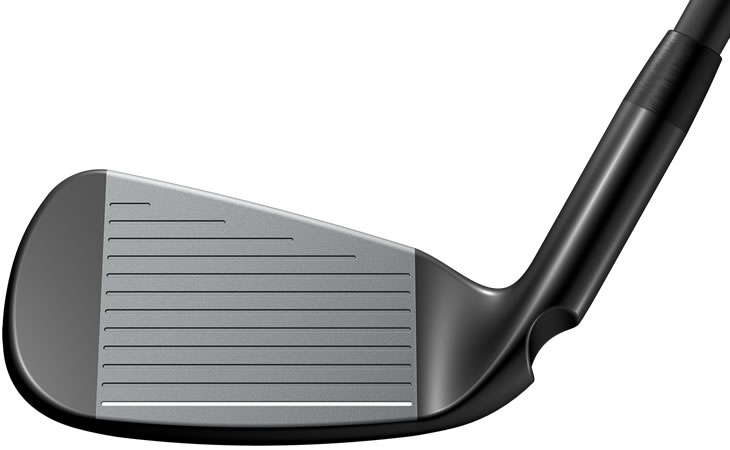
In the G Crossover Ping uses a tiered internal sole to generate the maximised face bending that the cascading sole gives to the G fairways and hybrids storing more energy for a larger springlike effect.
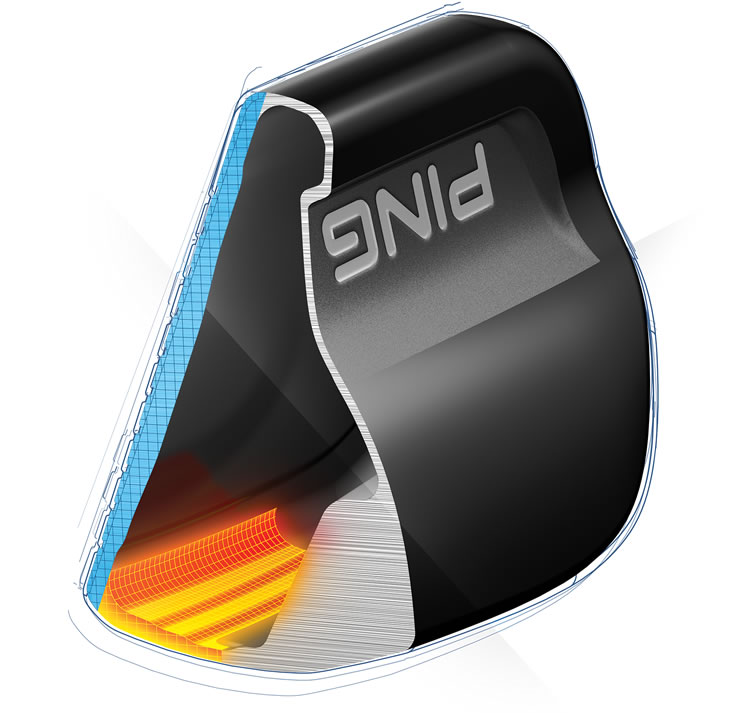
The forgiveness of a hybrid is maintained in the G Crossover thanks to an extreme weighting that positions CG low and back in the toe region both expanding perimeter weighting for high MOI as well as countering the weight of the hosel to stop the ball going left.
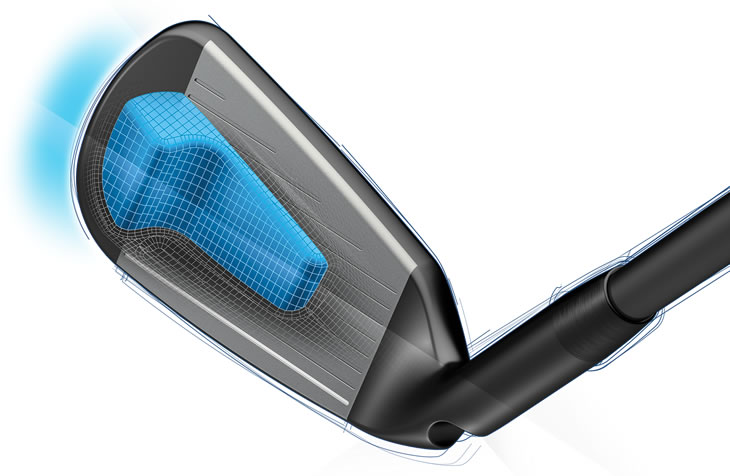
Read the Golfalot review of the Ping G Crossover
Ping G Irons
Those familiar with Ping irons will spot the distance Cor-Eye technology introduced in the Ping GMax iron being incorporated in the smaller chassis of the G irons.
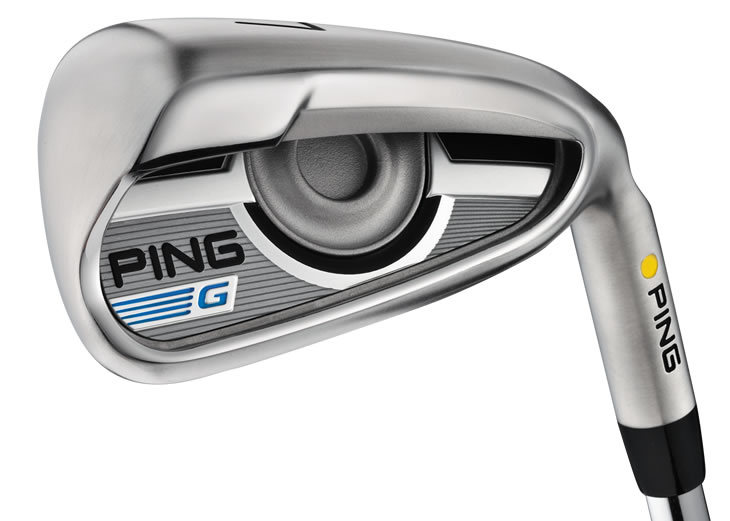
The Cor-Eye structure allows for a 32% thinner face that allow up to 4 times the bend found in the G30 that works with the sole and top fail to create a diving springboard type effect.
This increases ball speed by 1.25 mph resulting in an average distance gain of 5 yards over the G30 irons with additional carry and a higher maximum ball height and steeper landing angle.
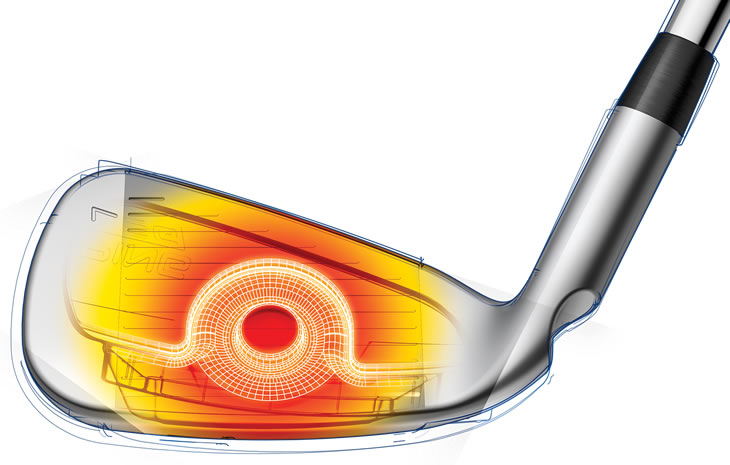
The COR-Eye design is made possible by the Hyper 17-4 stainless steel face that 40% stronger thanks to a 6 hour heat treating process. Ping heats the material for one and a half hours at 1040 degrees Celcius in a vacuum furnace to align the grain structure and then strengthen the material for a further four hours at 550 degrees.
In the G irons Ping has altered the structure of the iron to accommodate the concealed Custom Tuning Port, allowing it to connect to the first time in a G range iron, creating a 0.38 mm deeper CG position and allowing for more weight to be placed in the heel and toe areas.
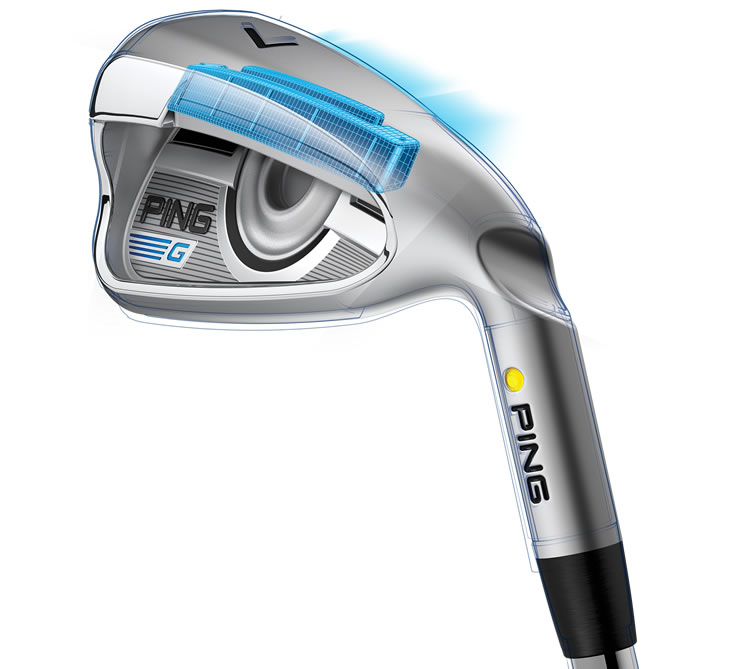
This increases MOI over the G30 by 5% from top to bottom and by 1.5% from heel to toe giving the G irons more forgiveness, higher launch and a tighter dispersion pattern.
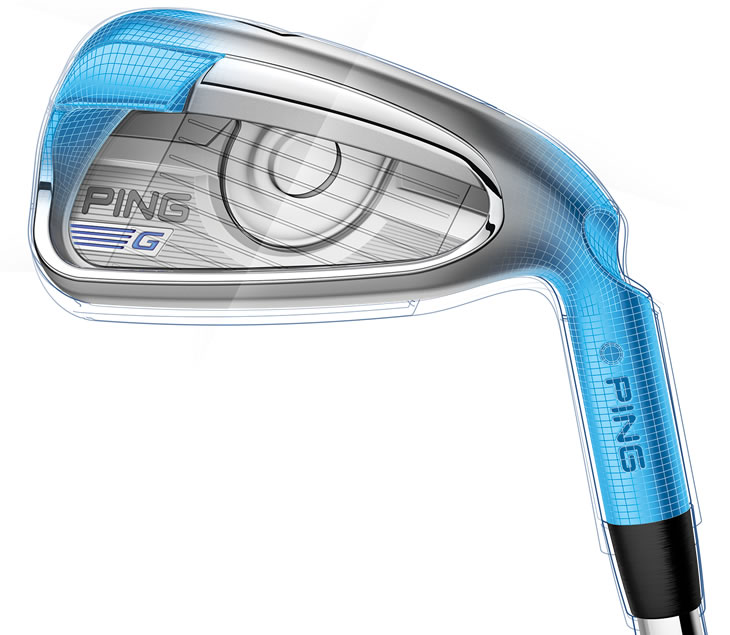
Finally the G irons Ascending Weight Technology to improve distance and accuracy with the long irons and give more control with short irons and wedges.
The AWT 2.0 shafts get heavier as they progress through the set from the long irons to the wedges. The lighter long irons shafts help players square the clubface more easily for increased distance and accuracy whilst the heavier shorter shafts give improved trajectory control and feel.
Read the Golfalot review of the Ping G Irons